What Did We Miss? Six books that should be in our Mock Newbery conversation
So far this fall we’ve discussed a bunch of books on Heavy Medal. 43 to be exact, ranging from fairly brief introductions to longer, more involved conversations. We still have three more Guest Blogger posts to come in November and will fit in a few other titles from late fall. Meanwhile, this is a good time to look back and see how many of the most highly praised books of the year we’ve missed.
I looked at our own nomination list, then checked Jen J’s Booksheets, a fantastic resource that tracks starred reviews (and more) for youth literature every year. I picked out half a dozen to briefly introduce. They all received at least four HM nominations and/or 4 starred reviews, but have not yet been featured here yet. Four of these, incidentally, are by authors with previous Newbery recognition.
ADVERTISEMENT
ADVERTISEMENT

AN ALMOST AMERICAN GIRL by Robin Ha (1 HM nomination, 4 starred reviews)
This memoir in graphic novel format covers the author/illustrator’s abrupt and painful move from Korea to Alabama at the age of fourteen. She captures the struggles of trying to adjust to a new family and a new country as a teenager, interjecting memories from her younger life in Korea. The graphic format works very well. The illustrations contribute a lot to characterizations and setting, but the writing is also excellent. The use of thought bubbles to show Robin’s internal responses to the comments and attitudes of others are particularly effective. This book certainly shares some qualities with EVERYTHING SAD IS UNTRUE, yet the two are so different in the ways they explore themes and concepts.

BECOMING MUHAMMAD ALI by James Patterson & Kwame Alexander (4 HM nominations, 5 starred reviews)
The fictionalized story of young Cassius Clay, told in alternating sections of prose and poetry, is highly engaging. Alexander’s poetry captures Clay’s energetic spirit while also painting a vivid picture of his community and his family. He mixes up styles and storytelling approaches, injecting humor, suspense, and information into the verse narrative. Patterson’s prose interludes, told from the viewpoint of a friend and future writer, also work well. Lucky shares and directly observes some of Cassius’ experience, but also offers a broader perspective. An interesting, and very different addition to this year’s novels in verse, which include BEFORE THE EVER AFTER, ON THE HORIZON, and CLAP WHEN YOU LAND.

BOX: HENRY BROWN MAILS HIMSELF TO FREEDOM by Carole Boston Weatherford (0 HM nominations, 5 starred reviews)
Here’s another excellent, but very different example of storytelling in verse. Weatherford presents over fifty six-line poems that tell the true story of Henry Brown from his point of view. The consistent length and rhythms work like a series of snapshots from his life. And they’re pretty harrowing. The examples of the horrors of slavery, including Henry’s own experiences and those of others, come through powerfully. The tension and triumphs of his escape are especially involving, though the poems about his later career as a reenactor and magician are less so. The true story pulls readers in, and the poems, whose six lines reflect “the cubic structure of a box,” provide distinct perspectives on Henry’s life and times. Interesting to pair this with OVERGROUND RAILROAD, which depicts a very different journey to the north.

DARLING DARLEEN, QUEEN OF THE SCREEN by Anne Nesbet (0 HM nominations, 4 starred reviews)
I only just started this one, so can’t really say much, but I’m hoping others may have read it and can share opinions. It’s set in 1914 New York and centered around a 12-year old stunt performer in early film melodramas. The breezy writing style and historical setting has me intrigued so far. And I think there’s going to be a kidnapping! Might be interesting to compare the tone of this to the other more serious historical fiction from the year, like PRAIRIE LOTUS, BLACKBIRD GIRLS, or A CEILING MADE OF EGGSHELLS.

WE DREAM OF SPACE by Erin Entrada Kelly (6 HM nominations, 5 starred reviews)
Kelly builds an involving story around the Challenger disaster, told by the alternating narratives of three siblings. Plot and character development are excellent. We get to know all three kids in different ways, at different paces, and they all change through the events of the book. These kids will continue to struggle in their own ways, and the parents’ relationship seems doomed, but that moment where the three decide to eat dinner outside, together, without their feuding parents is surprisingly powerful. Like THE LIST OF THINGS THAT WILL NOT CHANGE, it’s a book that deftly explores the subtle intricacies of family relationships and friendships.

WHEN STARS ARE SCATTERED by Victoria Jamieson and Omar Mohhamed (9 HM nominations, 5 starred reviews)
This book almost made into a few of my earlier posts and has been cited several times in comments. It’s a true story in graphic novel format, told with a deceptively casual style. It reads like Omar is just telling you his story in a matter-of-fact, conversational way. Which he is, but it’s a story that’s filled with hardship and loss. The authors let readers take it all in, without trying to ratchet up our emotions. They stick to Omar’s point of view, so it’s not like he’s explaining everything to American kids. (A different approach from EVERYTHING SAD IS UNTRUE, where the narrator is specifically trying to do that…and both work very well). The hardships are never glossed over, but at the same time, themes of family, friendship, and community shine through. Illustrations certainly play a big role, particularly in providing the setting, but the writing is also highly effective.
There’s more to say about these books than the brief introductions above. If you’ve read any or all, how do you think they compare to your own favorites from the year?
Filed under: Book Discussion, Heavy Medal Mock
About Steven Engelfried
Steven Engelfried was the Library Services Manager at the Wilsonville Public Library in Oregon until he retired in 2022 after 35 years as a full-time librarian. He served on the 2010 Newbery committee, chaired the 2013 Newbery Committee, and also served on the 2002 Caldecott committee. You can reach him at sengelfried@yahoo.com.
ADVERTISEMENT
ADVERTISEMENT
SLJ Blog Network
2024 Books from Pura Belpré Winners
In Memorium: The Great Étienne Delessert Passes Away
Winnie-The-Pooh | Review
Parsing Religion in Public Schools
Finding My Own Team Canteen, a cover reveal and guest post by Amalie Jahn
ADVERTISEMENT



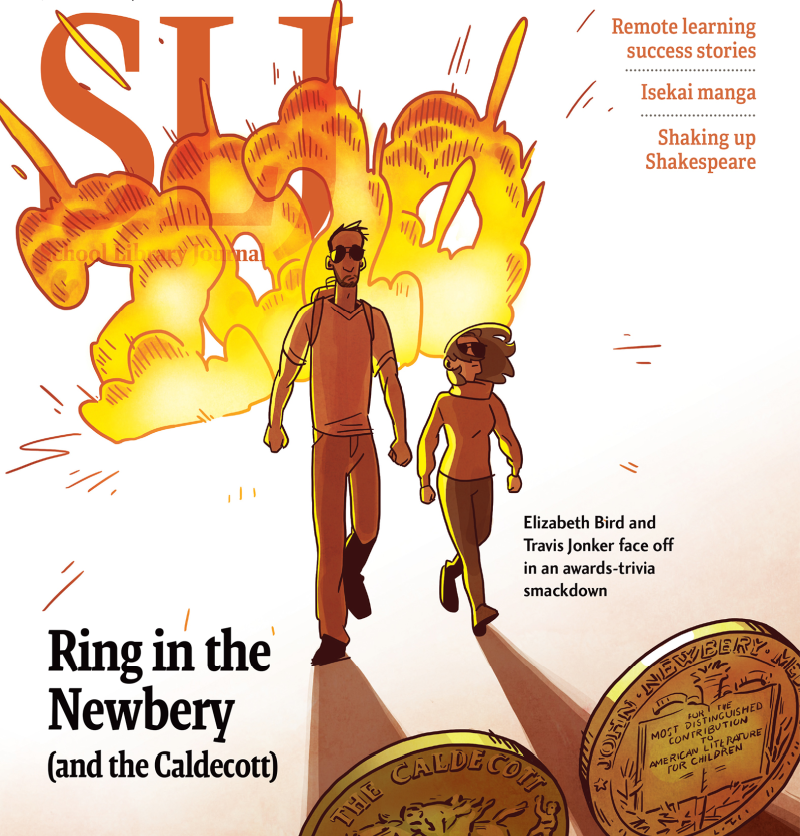
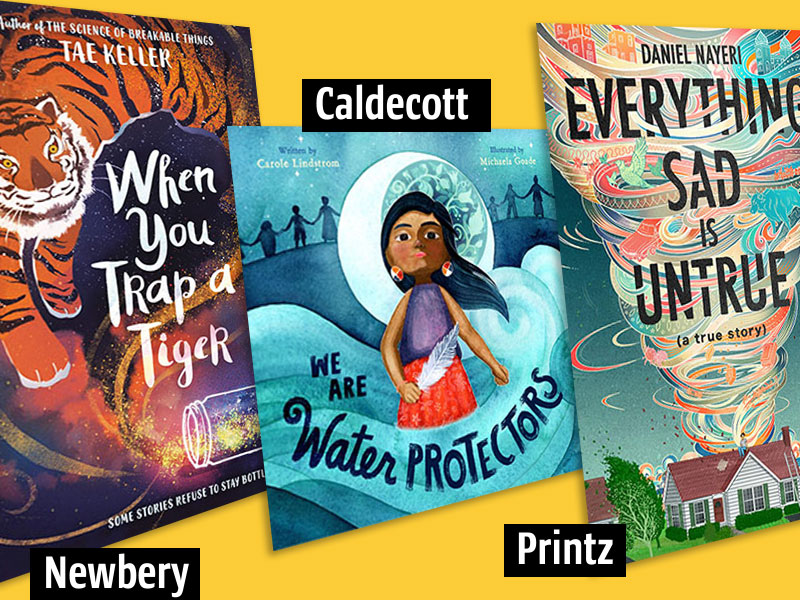
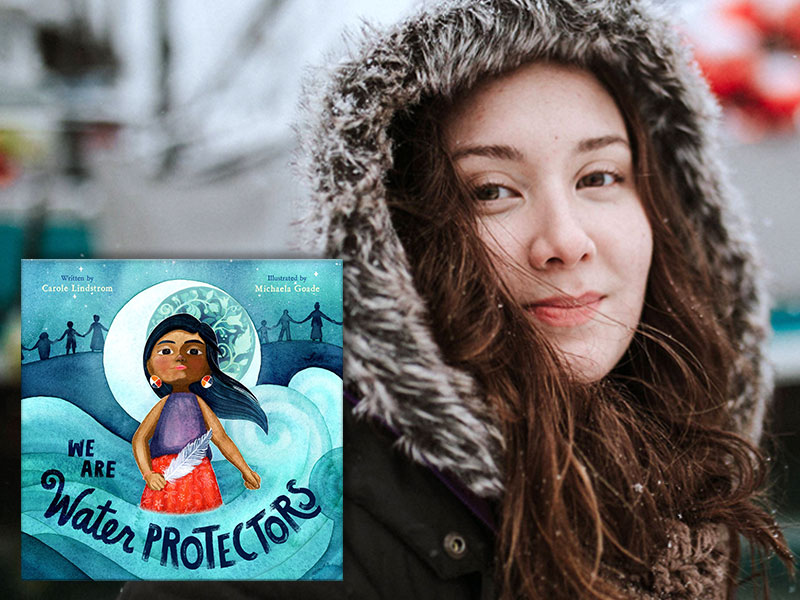
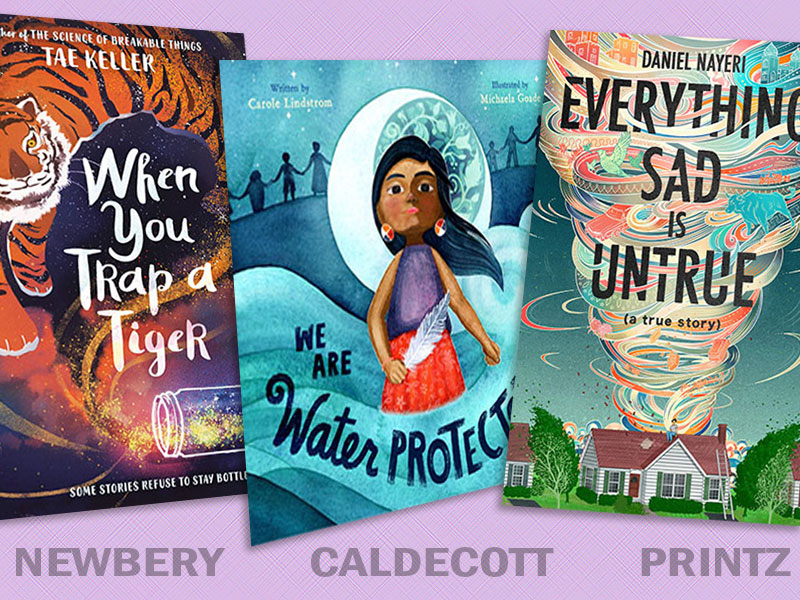
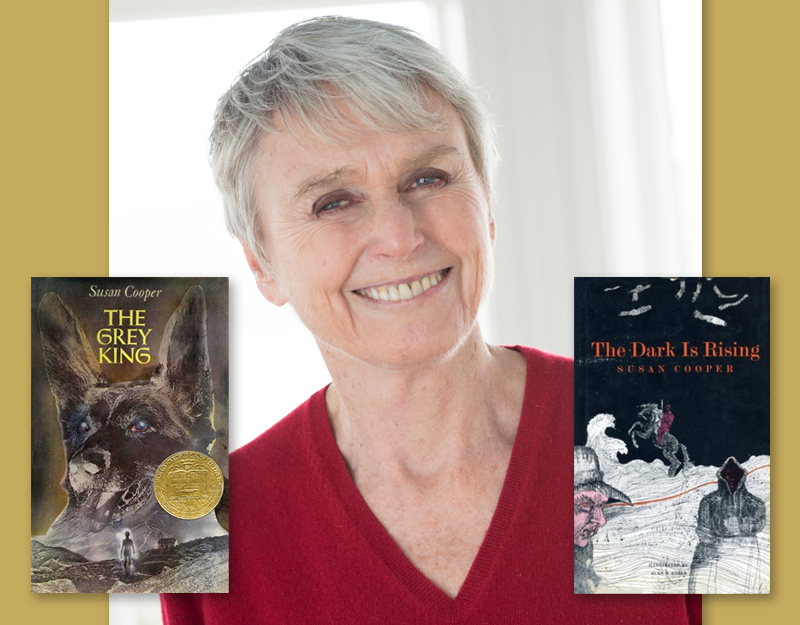
Steven, I know that we have already had this discussion about graphic novels and the Newbery, but I’ll bring it up again. These are great books. I have an issue with awarding the author of a graphic novel (or a picture book), for the Newbery because I believe that the illustrations are intrinsic to the success of the book. I would not apply this to all novels with illustrations. For example, going back to the classics, the text of Mary Norton’s THE BORROWERS clearly could stand alone without the wonderful illustrations of Beth and Joe Krush (American ediiton) or Diana L. Stanley (British), even though I would really miss those pictures. In graphic novels, the text and pictures are so closely intertwined that it bothers me to arbitrarily separate them. In the case of AN ALMOST AMERICAN GIRL, the author and illustrator are the same person, so in a sense it is not a problem. But that is not the case with WHEN STARS ARE SCATTERED,which has wonderful pictures, as well as text. I can really see the argument from the other side, and I would even agree that there are cases where the text might be so clearly superior to the pictures that it might, in theory, be different. I guess there is no definitive answer, although there are awards (Sydney Taylor would be one example) that recognize both the author and illustrator.
Emily, I am reading CHANCE right now and given your advocacy of it, I am curious about your assessment of this issue in that book. Is this for you an example of a book that “clearly could stand alone without the wonderful illustrations. . . even though I would really miss those pictures”?
For me so far, the illustrations in CHANCE seem to me to play a critical role in its success, though I guess I could imagine it argued for on the basis of text alone.
Leonard, given my advocacy of CHANCE, I was waiting for that question! First, I agree that the pictures are essential. Having said that, CHANCE is somewhat different. It’s not a traditional “graphic novel” (I don’t like applying that term to non-iction), although it does have some sequences which would fit that definition. Most of it is illustrated text. I think that the text would stand alone, but the book would be diminished. If you even compare word bubbles and caption-like texts in most graphic novels, with Shulevitz’s extended paragraphs, you will see the difference. One of the most interesting things about CHANCE is that it defies easy categories. Second, as with AN ALMOST AMERICAN GIRL, the author and illustrator are the same person, so you can avoid the question. In fact, CHANCE, in addition to being a memoir of persecution and escape, is also a portrait of the artist as a very young man. Shulevitz both writes and draws about his developing identity as an artist. (Although it’s a traditional picture book, Tomie dePaola followed the same path in THE ART LESSON, and also in his wonderful autobiographical sequence, 26 FAIRMOUNT AVENUE).
This has been a challenge for me too, Emily. I try to remind myself of a couple things:
We don’t really have to strictly separate words from pictures. Neither has to stand alone. I try to look at the whole book, and identify the areas where the text is distinguished. The criteria say that a book not have have “excellence in each of the named elements.” So if the “delineation of setting” is distinguished thanks to the illustrations (which could be said of WHEN STARS ARE SCATTERED), that doesn’t mean that the text is flawed; just that the words leave room for the pictures to shine in that area.
I also try to broaden my understanding of “text” to include “meaning” or “concept,” rather than only printed words. In an interview on HM from last year, Shannon Hale talked about her role as an author making decisions about exactly what content and meaning the illustrations should convey, even though she didn’t draw them, noting that: “A wordless page of a graphic novel was written.” Robin Ha uses larger frames to highlight inspiring moments from her life, like when she decides to change her name (52) or opens a box of comics from Korea (105). The artist draws the pictures, but the author creates the concept (they’re the same person in this case of course).
I’ve mentioned my own struggles with this before, and I still have to consciously adjust my Newbery-mindset when it comes to graphic novels and picture books, and even so I’m not sure that I fully give them their due. Recent Newbery Committees have worked through this, though, as evidenced by NEW KID, LAST STOP ON MARKET STREET and others. It’s possible that those committees might have included some who couldn’t bring themselves to vote for heavily illustrated books, but they definitely had enough who did.
I saw that DARLING DARLEEN is for sale on the Kindle app for $0.99. I like that price.
I agree with everything Steven said about Becoming Muhammad Ali. The setting (1950s Louisville, KY) and the characters big and small are vivid and well realized.
I think the format works well with “rounds” substituting for chapters with introductory pieces told in prose by Cassius Clay’s friend, Lucky, and written by James Patterson. The heart of the story is told from the first-person perspective of young Cassius Clay in Alexander’s vigorous verse, an apt approach for an athlete known for his dynamic and playful rhymes.
Boxing actually doesn’t enter the picture until about halfway through the story; as a result, the verse is not quite as dynamic as what we generally associate with Alexander, an approach I think works for the more solidly middle grade audience here than THE CROSSOVER and its progeny (I KNOW the real committee can’t do the comparison). The book lives up to it’s title as a coming of age story.
There is much strength here, but I do have concerns around the issue of accuracy. The cover states this is “ A Novel.” The preface reads, “The wonders and woes/in this novel are true …/or based on truth/and real things …/that happened/to real people …/or real people/we imagined …/to be true …/for real. So, this is fictionalized as Steven notes with disclaimers but with a lot of realness and even a bibliography. As a result, I wish Patterson had made clear in an afterword that best friend Lucky who provides an overview of Ali’s career and life in the “Final Round” as an grown-up journalist is a made-up character (at least, it’s what I thought I heard Alexander say during a presentation about the book). There’s no reason for young readers to think otherwise.
I also have a concern about the poem “I Was Thirteen,” which references “ a gruesome magazine photograph/of a twelve-year-old faceless boy.” I believe Emmett Till was fourteen when he was murdered. This and other events and issues around the racial discrimination experienced by Blacks in Clay’s Jim Crow South, however, are compelling, poignant and accessible, the latter helped by the distance of time that resonates today.
I was also curious about who else was real. Were Big Head Paul and Teenie and the rest real, or based on real characters? I usually don’t love long author notes where they share everything about a book’s creation, but would have liked a bit of framing in this case. I don’t know anything about Clay’s childhood, so I kind of want to know a bit more, even vaguely. But maybe that lack of a line between fact and fiction is what allows the poems to capture the essence of Cassius and his world more deeply.
I do know pop music, though, so when “Jake and Newboy were singing ‘Under the Boardwalk,'” (107) a 1964 song, in the 1950’s, I had to cringe. But then I remembered this is Lucky, looking back at his memories, not necessarily researching and fact-checking. The year of a pop song doesn’t matter, and that’s the sort of mistake people make (well, not me, but some people). The Emmett Till age is more meaningful, but also acceptable, I think, since it’s the fictional narrator’s reminiscence.
I certainly wanted to believe all those characters with all those colorful names were real! My concern is that children tend to be concrete thinkers and, thus, will think it’s all real, whether or not it is. While I’m willing to go with your argument about the lack of line between fact and fiction enabling a deep experience, which this certainly is, Steven, I’m less flexible around the age of Emmett Till’s death. If I were still working directly with kids, I could imagine one of them triumphantly telling me, ” This is wrong.”
I admit I had a hard time getting into WE DREAM OF SPACE. I didn’t like Fitch or his video games. But I’m so happy I stuck with it as I leaned why the three siblings are the way they are in their dysfunctional family. It’s a sympathetic portrait. It’s also brave to start with the sibling who is arguably the least likable of the trio, but Fitch does realize the error of his insensitive, REALLY insensitive, ways. To this end, Kelly is spot-on in her depiction of oft-cruel and clueless peer relationships in middle school. In lesser hands, her evocation of space allusions and metaphors might have been heavy handed. But here they are seamless and enlightening; these family members truly are each in their own orbit. The ending is realistically hopeful with brilliant Bird as the linchpin. But there are no miracles here, either for the Challenger or this clan.
One question: since each sibling’s section starts with their icon/avatar, does it mean their voices are not distinctive enough to identify them, especially early in the book? Or is it simply a video game reference? Or is it something else?
I thought the character icons were just a lighthearted visual cue. I hadn’t thought of them as video game avatars, since Fitch was really the only one into those, but maybe so. I do think it’s helpful with multiple narrators, especially in the beginning as we get used to their voices and characters. THE SUMMER WE FOUND THE BABY also uses drawings to help us track the multiple viewpoints, plus the character’s name. THE ENIGMA GAME, for older readers, just has character’s name.
But the question of whether the voices are distinctive enough is a good one. I think they are in WE DREAM OF SPACE. Bird’s probably stands out from the other two more, because hers is filled with wondering and musing. Fitch and Cash are more caught up in what’s happening right now…but their concerns and experiences are markedly different. I like the way all three characters do change: gradually, but in believable ways. And also the fact that with all that they share, none of them really directly addresses the big issue of their parents’ behavior. Even Bird, who wonders about it and imagines alternatives, doesn’t ever really just say: something is very wrong with my family. That really rang true to me.
That’s a good insight regarding the difference between the thinking of the two boys and their sister, Steven; I had a lot of sympathy for Cash as he struggled with the possibility of school failure once again and, of course, for Bird after the Challenger disaster. Even more I liked what you said about none of the siblings realistically naming the issue around their parents, even if it dwells in their subconscious. I was satisfied that the trio became allies in the end as a way to deal, in large part, with their anemic home life. As much as I liked the lovely and important BEFORE THE EVER AFTER, an adult sensibility sometimes came through regarding protagonist’s ZJ’s domestic life. I remember reading the poem “Invite List,” about his compromised father’s 35th birthday party and all the people that “we” didn’t invite; that is, those that had betrayed the family in some way and weren’t on the guest list. I wished that it had said “my mother,” as it seemed much more in keeping with an adult’s perspective. It’s a novel permeated with loss but dosed with warmth by extended family members, some of his father’s teammates, and ZJ’s cohort who do stand by them.
I have to admit I did not prefer WE DREAM OF SPACE. I will agree whole-heartedly that the depiction of the tensions within the family was excellent, but the handling of the Challenger disaster, purportedly the center of the novel, did not sit well with me (perhaps because I was one of those shocked children in those classrooms?)
I liked WHEN STARS ARE SCATTERED, but I would not rank it as highly as other, more complicated, graphic novels this year (for me SNAPDRAGON is the best) nor other traditional narratives.
And unsurprisingly (since I beat this dead horse every time), I think ALMOST AMERICAN GIRL is “too old” for the Newbery, but I accept completely that others do not share my feelings here 🙂
The other three I haven’t yet read though they do sound fascinating. This process is always so much harder than it seems on the surface!
I’d love to hear more about your take on the Challenger disaster in WE DREAM OF SPACE, Sara Beth. I was a young school librarian back then. My vivid memory is of middle-aged male teacher who was a friend of the library coming in to say he didn’t know what to do as his class of fourth-graders had been watching it. I don’t remember our response; just how shaken he was by the experience. Having been a child of the sixties when classes always watched the launches, I knew that things could end tragically.
Sara Beth,
I recently read ALMOST AMERICAN GIRL and I wholeheartedly agree with you about the age question. This is a book that could so easily have pivoted to adult level with a few tweaks, as the writer looks back on her youth. There are many adult issues included, particularly the behavior and rationales of her mother, which I truly would be lost on many younger readers even at the top of the Newbery range. It’s a lovely book, but to me it doesn’t really work for HM or the actual Newbery committee.